Allgemeine SS Totenkopfring
CATEGORY: Version
SKU: 50.GOR.02.02.05.003.000
Estimated market value:
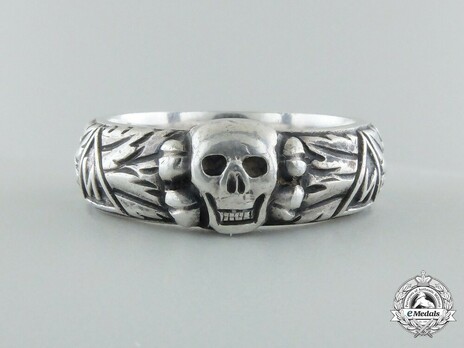
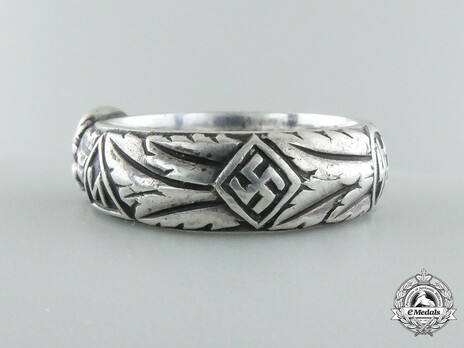
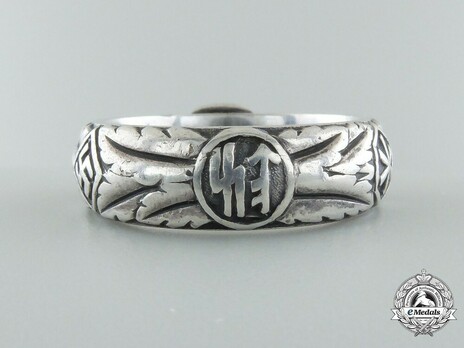
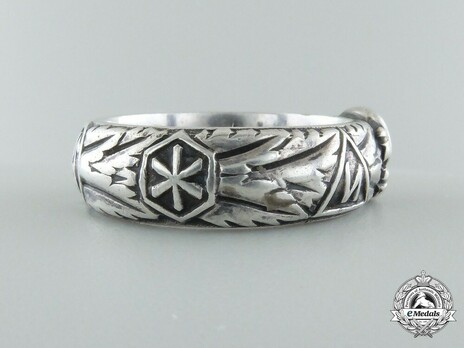
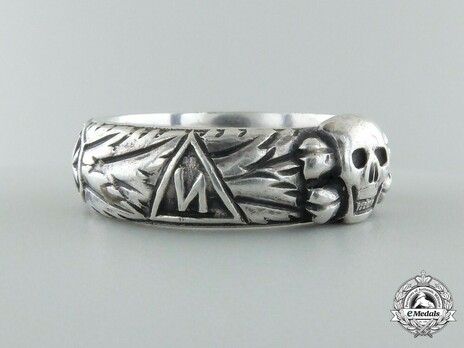
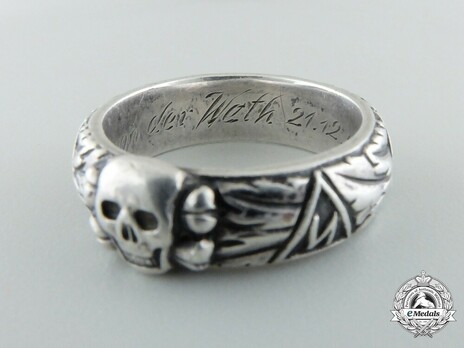
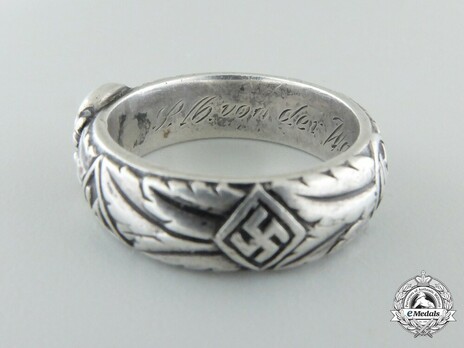
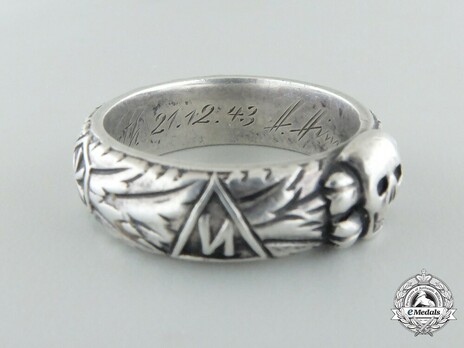
Estimated market value:
The idea of a special ring for the members of the SS was first devised by Reichsführer-SS Heinrich Himmler in 1933. The ring was not a party award, it was a special honor bestowed by the SS. The ring was officially introduced on November 9th, 1933, and it came with a small citation that described the importance of the honour and was signed by Himmler. It was not until April 10th, 1934, that the first regulations regarding the institution and conferral of the ring were issued.
The first set of rings were presented at the end of 1933 to senior SS Officers including Reinhard Heydrich, who received his ring on December 24th, 1933. SS Officers were later required to apply for rings once they had fulfilled the award criteria described in the official orders. The Officer would be sent application forms and a ring measure, and if the application was accepted, a ring was created for the Officer by the Munich-based silversmith Gahr.
Until September of 1936, the rings were conferred at the discretion of Heinrich Himmler, but eventually, exact dates on which the ring could be conferred were specified. These dates include April 20th (Adolf Hitler’s birthday), June 21st (Summer Solstice), November 9th (Anniversary of the Beer Hall Putsch), and December 21st (Winter Solstice).
After the death of a recipient, the next-of-kin were legally required to return the ring to the Office of the Reichsführer-SS. In 1938, Heinrich Himmler determined that the rings of deceased SS members would be collected and taken to the ‘Shrine to the Holders of the Totenkopfrings’ located in Wewelsburg Castle.
The ring was designed by Karl Maria Wiligut, an SS member with an extensive knowledge of Germanic history and runes. The symbols hand tooled on to the ring included SS runes, the name of the recipient, the date of the award, a facsimile of Himmler’s signature, and the dedication “S. lb.” which was an abbreviation for “Seinem lieben,” meaning “to his dear”.
The rings were die-cast, tooled by hand, and then polished to remove casting errors. The rings were then engraved and formed into a circular shape. The separately die-cast skull would then be soldered to the front of the ring. The rings were originally manufactured out of fine silver, but following the outbreak of the Second World War, it became increasingly difficult to find high-quality silver. Despite the increased difficulty, Himmler ordered that the rings must still be produced.
The ring featured a variety of Germanic runes including the Sig rune, a Hagal rune, a swastika, and double runes.
The design of the ring slightly changed during the time it was produced. For example, the skull's nostrils, teeth, and eye sockets slightly changed over time. Rings produced in the 1930s feature skulls with slanted eye sockets, and the rings produced in the 1940s have deeper set, round eye sockets.
The ring was presented in a small box. The original box design was manufactured out of silver-coloured metal and featured a facsimile of the ring on the top of the box. It was decided that this design was too expensive, and the final design was a small circular cardboard box that was finished in black. The top of the box featured a double circle with SS runes inside.
On October 30th, 1944, Himmler issued an order stating that no more rings would be produced for the remainder of the war. From 1934 to 1944, 14,500 rings were awarded. In January of 1945, the Sicherheitsdienst (security service) reported that 64% of the rings had been returned to the SS, 10% had been lost in battle, and 26% percent remained with their owners or were unaccounted for.

Comments
Sign in to comment and reply.


Scroll Top